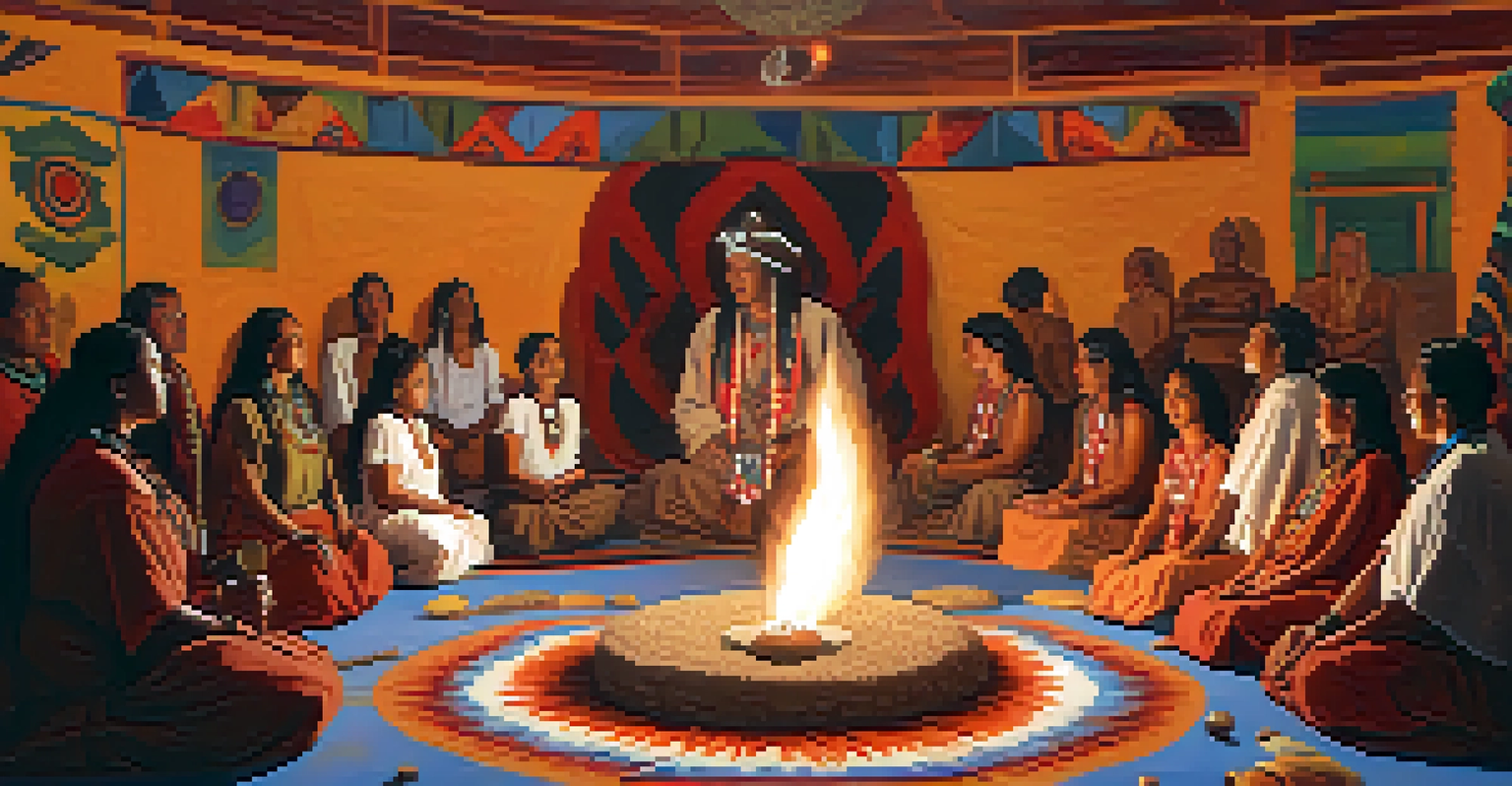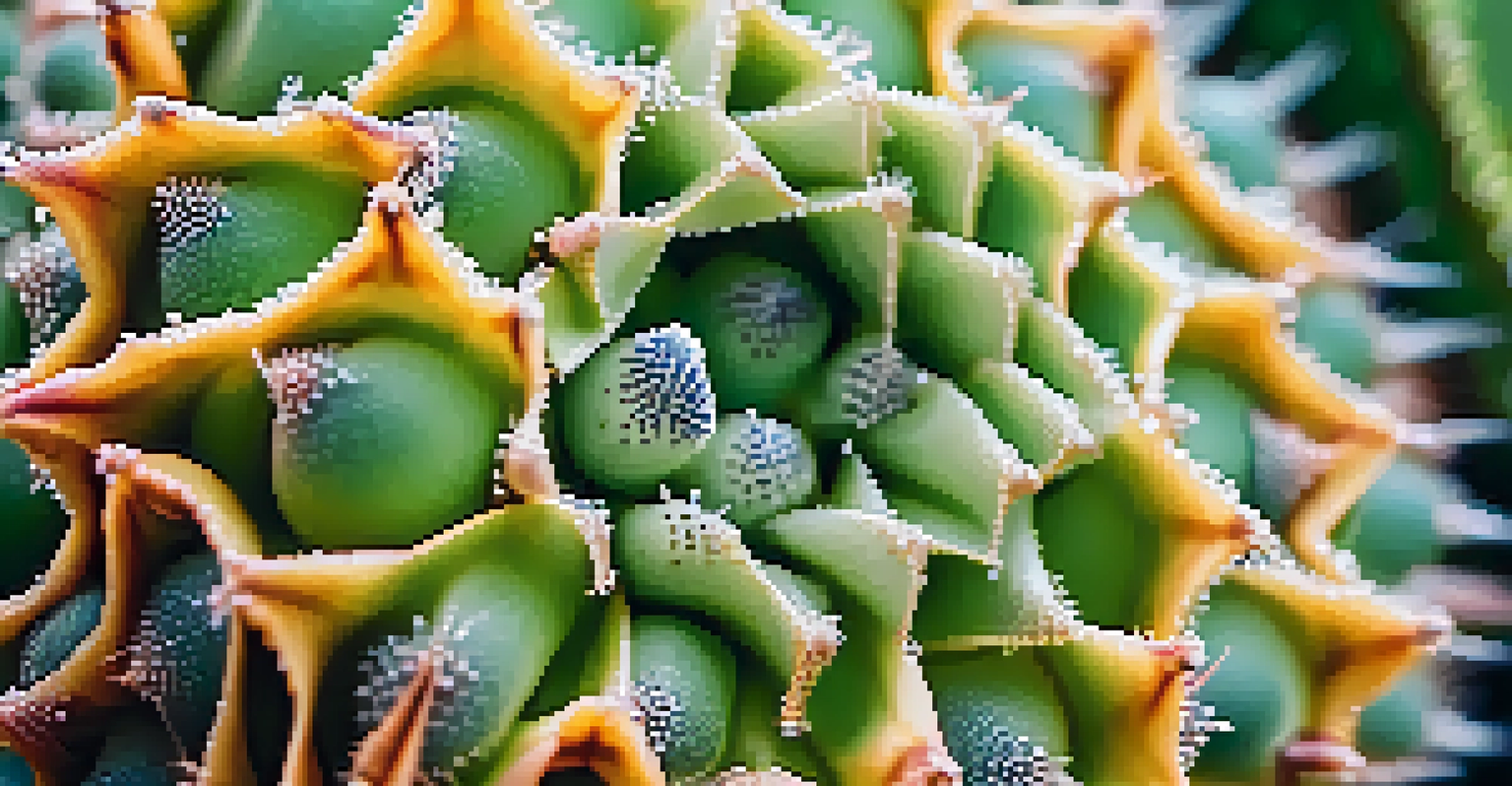The Intersection of Peyote and Indigenous Healing Practices

Understanding Peyote: A Sacred Cactus
Peyote, a small cactus native to North America, has been used for centuries by Indigenous peoples for its psychoactive properties. This unique plant contains mescaline, a compound that induces altered states of consciousness. For many tribes, peyote is not just a plant but a sacred element of spiritual and healing rituals, symbolizing connection to the earth and ancestors.
The plant is not just a substance but a living entity that connects us to our ancestors and the earth.
The use of peyote in spiritual practices can be traced back thousands of years, with archaeological evidence suggesting its consumption as early as 5,700 years ago. It's important to understand that peyote is more than a hallucinogen; it's a tool for introspection, healing, and community bonding. Many Indigenous cultures view this cactus as a gift from the Creator, integral to their identity and heritage.
In the modern context, the significance of peyote continues to thrive, particularly within the Native American Church, where it plays a central role in ceremonies aimed at promoting physical, mental, and spiritual well-being. These gatherings create a space for healing, reflection, and connection with the divine.
Indigenous Healing Practices: A Holistic Approach
Indigenous healing practices often emphasize a holistic approach, addressing the mind, body, and spirit as interconnected elements of health. This perspective contrasts sharply with Western medicine, which frequently focuses on the physical symptoms of illness. In these cultures, healing rituals may include herbal remedies, prayer, and community support.

Traditional healers, or shamans, are vital in this process; they guide individuals through their healing journeys, using both spiritual and natural methods. These healers often blend various techniques, from chanting and drumming to using specific plants, to create a comprehensive healing experience tailored to the individual's needs.
Peyote: A Sacred Healing Tool
Peyote is not just a hallucinogen; it serves as a vital element in spiritual and healing rituals for Indigenous peoples.
Through ceremonies, individuals are encouraged to release emotional pain and connect with their inner selves. This practice resonates deeply within communities, fostering a sense of belonging and support that is crucial for overall well-being.
Ceremonial Use of Peyote: Connecting with the Spirit World
Peyote ceremonies are profound spiritual experiences that allow participants to connect with the spirit world. Often held in a sacred space, these gatherings involve singing, drumming, and prayer, creating an atmosphere conducive to healing and reflection. The communal aspect of these ceremonies strengthens social bonds and collective healing.
To understand the healing properties of peyote, we must first acknowledge the cultural contexts from which these practices arise.
During the ceremony, participants consume peyote and enter altered states of consciousness, which can lead to deep personal insights and emotional releases. Many describe these experiences as transformative, providing clarity and a renewed sense of purpose or direction in life. This sacred time allows individuals to confront their inner struggles in a supportive environment.
Importantly, the ceremonial use of peyote is guided and respectful, always emphasizing the need for intention and reverence. Participants are encouraged to approach the experience with humility, understanding that they are part of a larger spiritual tapestry woven by their ancestors.
Cultural Significance of Peyote in Indigenous Communities
For many Indigenous communities, peyote represents more than a substance for rituals; it embodies cultural identity and continuity. The practices surrounding peyote are passed down through generations, preserving ancient wisdom and traditions. This continuity is vital in maintaining cultural heritage amid external pressures and changes.
The act of gathering and participating in peyote ceremonies fosters a sense of unity and belonging among community members. It's a time for storytelling, sharing experiences, and reinforcing cultural values, all of which help to strengthen community ties. These gatherings serve as a reminder of shared history and collective resilience.
Holistic Indigenous Healing Practices
Indigenous healing emphasizes the interconnectedness of mind, body, and spirit, contrasting with the often symptom-focused approach of Western medicine.
Additionally, the cultural significance of peyote has attracted attention beyond Indigenous communities, sparking interest in its potential benefits and therapeutic applications. However, this interest must be approached with respect for the cultural practices and traditions that have existed for centuries.
Contemporary Challenges: Preservation of Sacred Practices
As interest in peyote grows, Indigenous communities face contemporary challenges in preserving their sacred practices. Issues such as overharvesting, land rights, and cultural appropriation threaten the sustainability of peyote and the rituals surrounding its use. These challenges highlight the importance of protecting both the plant and the cultural practices associated with it.
Many tribes are advocating for the protection of their rights to practice their traditions without interference. This includes legal recognition of peyote’s sacred status and efforts to ensure that the plant is harvested sustainably. Education and awareness about the cultural significance of peyote can help mitigate some of these challenges.
Moreover, the dialogue around peyote's role in contemporary society underscores the importance of respecting Indigenous knowledge and practices. Engaging with these communities can foster a greater understanding of their values and the significance of their traditions, paving the way for more respectful interactions.
The Science Behind Peyote: Healing Properties Explored
Scientific research on peyote has begun to uncover its potential therapeutic benefits, particularly concerning mental health. Mescaline, the active compound in peyote, has been studied for its ability to induce altered states of consciousness that may aid in treating conditions like PTSD, depression, and anxiety. These findings align with Indigenous beliefs about the healing power of the plant.
One of the fascinating aspects of peyote is its ability to promote introspection and emotional release. Many participants in studies report profound insights and a sense of connectedness to themselves and others, which can facilitate healing. This aligns with the holistic approach found in Indigenous healing practices, where emotional and spiritual well-being is just as important as physical health.
Cultural Continuity and Challenges
The cultural significance of peyote fosters community unity but faces contemporary challenges like overharvesting and cultural appropriation.
However, it's crucial to approach this research with respect for Indigenous practices and the understanding that these ceremonies are not mere experiments. The integration of scientific research with Indigenous knowledge can create a more comprehensive understanding of healing and the role peyote plays in it.
Respecting Indigenous Knowledge: A Path Forward
As we explore the intersection of peyote and Indigenous healing practices, it's essential to approach this topic with respect and understanding. Recognizing the depth of Indigenous knowledge and the cultural significance of peyote can foster more respectful dialogue and collaboration. This means listening to Indigenous voices and supporting their rights to practice their traditions.
Education plays a crucial role in bridging gaps between cultures. By learning about the history and significance of peyote, we can cultivate a greater appreciation for its role in Indigenous healing practices. This understanding can lead to advocacy for the protection of these sacred traditions and their rightful place in contemporary society.

Ultimately, respecting Indigenous knowledge and practices paves the way for mutual understanding and collaboration. By honoring these traditions, we can contribute to the preservation of cultural heritage and support the health and well-being of Indigenous communities.